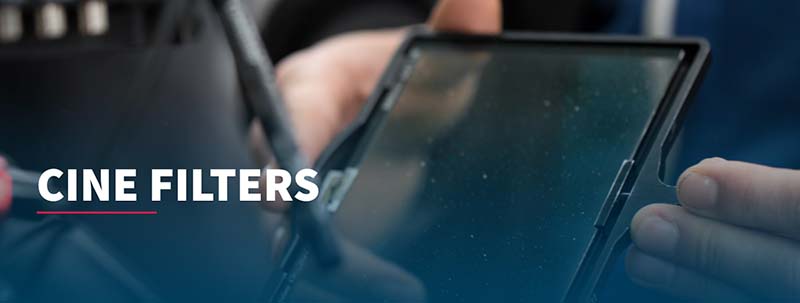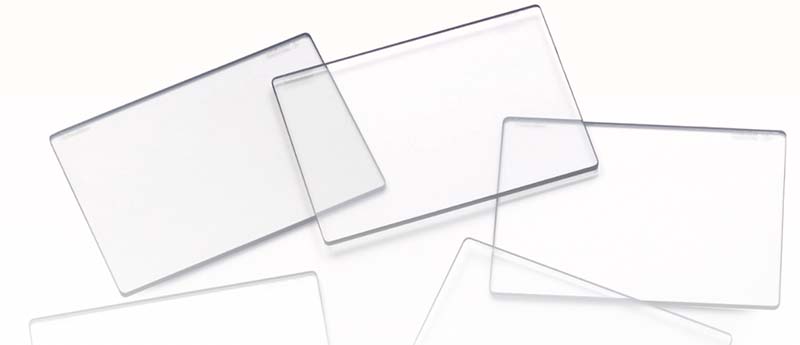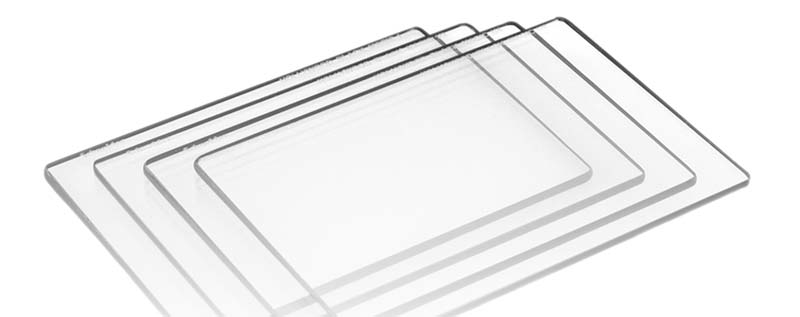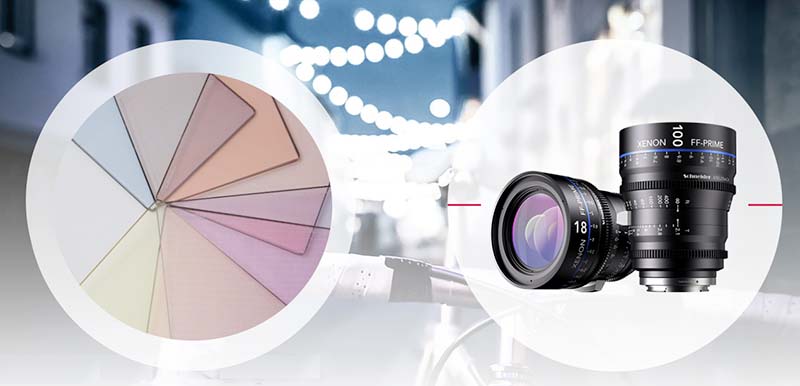Schneider-Kreuznach: high-end cinematography
cine prime lenses and cine filters
Whether on set or in the studios, Schneider-Kreuznach lenses and filters always set standards in movie shootings. Developed and manufactured in Germany or the USA, their reputation is well-respected all over the world. Schneider lenses and filters have been recognized with dozens of prestigious industry honors including the Technical Achievement Award from the Academy of Motion Picture Arts and Sciences and an Emmy from the Academy of Televison Arts and Sciences.
Xenon FF-Prime Lenses

Schneider-Kreuznach prime lenses are the high-quality tool for professional and creative filming. These lenses impress with excellent imaging quality, very low distortion and the harmonious image of uncertain elements in the background.
The Xenon FF-Prime lenses are built from scratch to meet the demands of today’s high-resolution digital cinematography – made to last through generations of changing camera technology. It is versatile enough to work with an array of cameras and accessories you may need for various projects today and tomorrow.
So whether it is RED Dragon or Weapon, Canon C100/C300/C500, Arri Alexa, Black Magic, Sony F5/F55 and HDSLR cameras, these compact lenses provide 4K (4096 × 2304 pixels) resolution and cover the full 43.3 mm image circle usable on Canon 5D and Sony A7 cameras.
The Xenon FF-Prime family currently includes 18 mm T2.4, 25 mm T2.1, 35 mm T2.1, 50 mm T2.1, 75 mm T2.1 and 100 mm T2.1 focal lengths. These German-made optics offer outstanding image quality yet are ruggedly built to withstand the daily rigors of a working set.
The Xenon FF-Prime lense range is complemented by a series of matching filters.
More info on https://schneiderkreuznach.com/en/cine-optics/products/cinematography/xenon-ff-prime-set
Cine Filters

Schneider-Kreuznach represents a long history of extraordinary lenses and filters for many industries including still photography, high definition, television broadcasting, cinematography, and digital projection. It’s no wonder Schneider-Kreuznach filters for motion pictures and digital cinematography are the finest in the industry.
More info on https://schneiderkreuznach.com/en/cine-optics/products/cine-filters
Why using cine fiters?
Cine filters are used as a tool to tell your story effectively. Here are three most important reasons for using cine filters for your jobs.
1. The greatest latitude for creative opportunities comes from having the real world as your source. With the real world you have infinite potential to control the image, as you have so much more information available than you will ever have later. If you haven’t gotten it right in
camera, it may be impossible to resurrect it in post.
2. It gives you more control over the final image. All too often, the cinematographer has moved on to the next production and isn’t involved in the final edit. This combination means others are often in a position to alter the look in ways that may not adhere to the original vision. Putting optical filter effects into the mix means your vision will be that much more likely to make it into the final result.
3. It saves you time and money. Finally, a basic feature of filters is that once used, your job of
creating the effect is done. Filters provide the look you want in-camera without the need to spend additional resources in post, often for considerable time and cost savings. When looked at this way, there isn’t much else that so effectively combines ease of use with the powerful ability to impart the greatest impact to your images as the simple use of camera filters.
Categories of cine filters
Schneider-Kreuznach has technical filters, diffusion filters and sensational filters. Read all about them below.
Technical Filters

Schneider's Technical Filters can provide optical solutions for technical problems involving exposure, dynamic range, depth-of-field, color and saturation, refection control and many other imaging problems.
Technical
filters contain Pol filters, Neutral Density filters, and Protection filters.
Pol filters
Polarizer reduces glare and unwanted reflections, improves contrast, penetrates haze at long distances, deepens blue skies, and helps maintain color saturation.
Schneider-Kreuznach filter names: Circular True-Pol, Linear True-Pol, One-Stop Circular Polarizer.
Neutral Density filters
ND filters attenuate light equally within the visible spectrum. Maintaining a low F-stop for gaining a small depth of field these filters are used for control of bright day exteriors. They, therefore, allow more widely opened apertures.
Graduated neutral density filters are used to darken an overly bright part of a scene, like a sky, and lighten the foreground. They bring an overly bright part of a scene into the dynamic range of the sensor.
The Rhodium FSND filter (Full Spectrum Neutral Density) attenuate light equally within the wavelength range from 350-1000nm including UV- and near IR-light. This is of particular importance to avoid IR light pollution resulting in unwanted purple and/or violet color artefacts in dark areas of the frame. Additionally, Schneider attaches a great emphasis on color consistency to allow easy color grading, all shots, filtered, or unfiltered can be graded in the same way. This is important specifically for the critical color standards of 4K, 6K, and 8K resolution cameras and the short turnaround times in today’s post-production processes.
Schneider-Kreuznach filter names: ND, RHOdium® FSND, RHOdium® FSND Graduated Hard Edge, RHOdium® FSND Graduated Soft Edge.
Protection filters
Clear Filter keep dirt or splashes away from the lens and protect the lens from damages. While colorless UV Filters ensure more brilliant images by blocking the unwanted UV component contained in daylight.
Schneider-Kreuznach filter name: Clear.
Diffusion Filters

Schneider's Diffusion Filters can enhance the emotional impact of images by softening fine details, adding a warm glow to highlights and other effects.
Diffusion filters
Diffusion filters soften the image. They reduce fine details as skin imperfections without affecting the sharpness of the image. Modern lenses are often so sharp, that skin does not look nice, showing every pore and winkle. Diffusion filters smooth those blemishes and create a flatten skin, providing a romantic, pleasant look, without defocusing the scene.
Diffusion filters also add highlight flare, putting a halo around blown windows, light sources, or areas of high exposure. Can also be used to reduce picture contrast by lowering white exposure, and to create romantic or period looks.
Schneider-Kreuznach offers different types of diffusion filters. Each technic providing its own effect.
- Classic Soft filter provide a precisely controlled soft image that is overlaid on a sharp, in-focus image.
- While Black Frost mist flared highlights, tones down contrast while retaining rich blacks.
- The Hollywood Black Magic combines both: pleasant softening of bright highlights helps control exposure while maintaining rich blacks and colors.
- The Radiant Soft series expands Schneider-Kreuznach diffusion filter line, bringing the ability to give the talent´s skin a radiant, soft glow with a soothing effect on light skin imperfections and blemishes at the cost of very little blooming effect on highlights.
Focal length and F-Stop affect the level of diffusion. For a better control all filters come in different strength. The longer the focal length and the more light on the subject the stronger the effect.
Schneider-Kreuznach filter names: Radiant Soft, Classic Soft, Hollywood Black Magic, Black Frost.
Sensational Filters

Schneider's Sensational Filters can create visually sensational effects, producing brilliant streaks, intense color, magnify minute details, and over-the-top diffusion effects, and more.
Streak filters
The Schneider-Kreuznach Streak Filter are designed to create the effect of a scene or image that has been recorded with an anamorphic lens and then displayed using a complementary reverse projection lens.
The filter offers an exciting way to simulate the anamorphic streak effect with virtually any lens, anamorphic or not. Within the filter’s glass is a combination of fine line tubes whose action is limited to point light sources. Upon those light sources such as the sun, a light bulb or a candle long colored streaks emanate. This results in prominent, elongated streaks that are symmetric from each point light source to draw attention to a specific part of the frame, or to create a visually dramatic look. By rotating the filter orientation of flares can be influenced. A creative way to enhance night exteriors, highlight reflections off chrome surfaces, “wow” them with vibrant rock’n’roll illumination or achieve other stand-out imagery to liven the look with stunning vintage effects.
Schneider-Kreuznach filter names: True-Streak, True-Streak Confetti.
Diopter
A diopter is a close-up lens attachment that shortens close-focusing distance of lenses by shortening the focal length. The higher the strength the shorter the focal length and the shorter the focusing distance. The strength is given as reciprocal of focal length in meter.
A Split diopter is a standard diopter element which is precision-cut in half and mounted in a ring. It creates a shot with two planes of focus rather than one. Makes a sharp image of the foreground (captured through the diopter) and the background (captured through the uncovered half of your camera’s lens).
Schneider-Kreuznach filter names: Close-Up Diopter FULL, Close-Up Diopter SPLIT.
Price List
Download here the Schneider Xenon FF-Prime Lenses price list
Download here the Schneider Cine filter price list
Where to buy?
Click here to find our Schneider resellers. If you a can't find a reseller in your country, mail to: orders@mediamachine.nl










